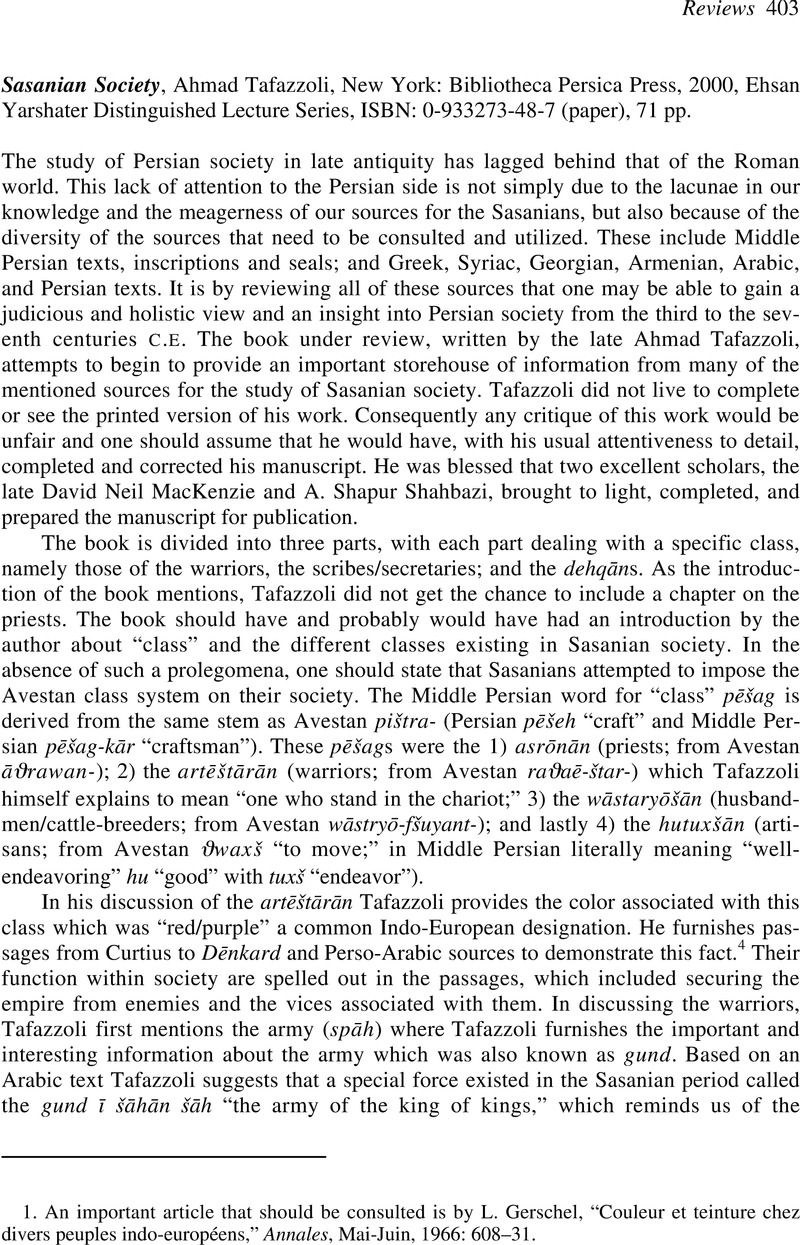No CrossRef data available.
Article contents
Sasanian Society, Ahmad Tafazzoli, New York: Bibliotheca Persica Press, 2000, Ehsan Yarshater Distinguished Lecture Series, ISBN: 0-933273-48-7 (paper), 71 pp.
Published online by Cambridge University Press: 01 January 2022
Abstract

- Type
- Reviews
- Information
- Copyright
- Copyright © The Society for Iranian Studies 2003
References
1. An important article that should be consulted is by L. Gerschel, “Couleur et teinture chez divers peuples indo-europeens,” Annales, Mai-Juin, 1966: 608–31.
2. For the latest evidence see Gyselen, R., The Four Generals of the Sasanian Empire: Some Sigillographic Evidence (Rome, 2001)Google Scholar.
3. In fact specific coins may have been struck for the dīwān ī gund, for which see, Gurnet, F., “Deux notes à propos du monnayage de Xusrō II,” Revue belge de Numismatique 140 (1994): 36–37Google Scholar.
4. Further evidence for amārgars is found in Gyselen, R. La gèographie administrative de l’empire sasanide, Res Orientales I (Paris, 1989)Google Scholar.




